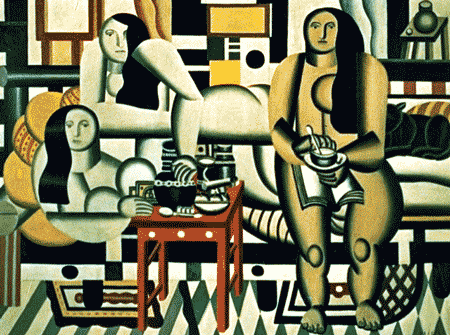Rhythm and Movement
Visual rhythms can be very simple, as in a regular one-beat rhythm. An example might be a series of identical circles repeated one after another.

Do you sense rhythm and movement in this two-dimensional work?
An. alternating rhythm is like a regular series of visual changes - circle-square, circle-square, circle-square and so on.
A flowing rhythm has a graceful path of repeated movements with no sudden changes.
In a jazzy rhythm, the repeated elements are varied in complicated pat- terns and combined with unexpected elements.
Not
all of the visual movements in an artwork are rhythmic. Sometimes
a work has a dominant path of movement that adds to a mood. The
sense of movement may come from a tall, vertical form reaching upward.
Sometimes there is a path of motion leading to a center of interest.
Even the absence of motion can be expressed. For example,
a quiet, still, calm feeling may come from the use of many horizontal
lines or forms.